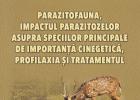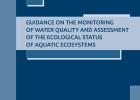11.02.2022
On 11 February, the scientific community celebrates the International Day of Women and Girls in Science, as result of the United Nations General Assembly resolution A/RES/70/212 adopted in December 2015. The initiative had the aim to promote the employment of women and girls in the sciences, to encourage the career development and participation in the decision-making processes in science, to recognize the achievements of women in science. Currently, 45 women researchers are employed at the Institute of Zoology, making up 48.4% of the total number of researchers. Among them, 3 hold the title of ...
08.02.2022
Monograph „Parasitofauna, the impact of parasitoses on the main species of hunting importance, prevention and treatment”, author – dr. assoc.prof. Stefan Rusu, leading scientific researcher in the Laboratory of Parasitology and Helminthology of the Institute of Zoology, elucidates the level of infestation with parasitic agents of the main species of hunting importance from the Republic of Moldova, the impact of mono- and poly invasions on the host organism and on the indexes of quality of the animal products, diagnostic methods and innovative procedures for prophylaxis and treatment. Monograph ...
04.02.2022
Guidance on the monitoring of water quality and assessment of the ecological status of aquatic ecosystems (editors: dr. Lucia Biletchi, corr.mem. Elena Zubcov) was elaborated by the researchers of the Laboratory of Hydrobiology and Ecotoxicology and the Laboratory of Ichthyology and Aquaculture in the frame of the project no. 20.80009.7007.06 AQUABIO, State Program (2020-2023). Some research findings within the ongoing international projects BSB 27 MONITOX and BSB 165 HydroEcoNex (Joint Operational Program Black Sea Basin 2014-2020 of the European Union) were also used. The book represents, in ...

















